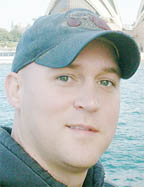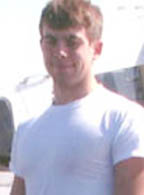– occupants presumed deada
With no sighting after two weeks, Transport and Hydraulics Robeson Benn yesterday called off a search and rescue mission for a missing US charter plane, saying its three passengers are presumed dead.

Benn, who said it was a difficult decision to make, told a press conference that it was futile to continue the search after 15 days with no sign of the three men who were aboard the Beach King Aircraft. Americans James Wesley Barker, 28, and Chris Paris, 23, the Captain and First Officer, respectively, along with Canadian Patrick Murphy, a geophysics technician were on board the plane. The aircraft was chartered from Dynamic Aviation Inc by Terraquest Ltd to conduct geophysical surveys on behalf of Prometheus Resources (Guyana) Inc, a subsidiary of the Toronto-based U3O8 Corporation. The aircraft was scheduled to operate in the Chi Chi – Imbaimadai area located in Cuyuni and following four hours, thirty minutes in the area it was expected to return to the Cheddi Jagan International Airport.
“As difficult as it may seem we have done everything that we could do or that we can possible do… We have expended all the resources, the time and the effort that we could at this stage of the game [and]…until anything else happens we have concluded that the aircraft and its occupants are lost,” Benn said. “We are calling off the search… We presume that the aircraft and its occupants, that there has been a crash and both the aircraft and its occupants are presumed lost.” According to him, the men “perished” and the authorities are not in the position to recover them. “We have no specific knowledge of their whereabouts,” he said.
However, Benn said the companies plan to continue limited search operations in the area where the aircraft went missing, using residents and persons who know the area.

Faced with criticism that the search and rescue operation may have been put into motion much too late after the last contact with the aircraft on November 1, Benn said that there was no way aircraft could have flown into the area the same day because of the bad weather and the terrain. The minister described the operation as the “most intensive and sophisticated search for any aircraft missing in Guyana.”
Head of the Guyana Civil Aviation Authority (GCAA) Zulfikar Mohammed also told the media that immediately after contact was lost with the aircraft, personnel from the authority, the Guyana Defence Force (GDF), British military, Terraquest and local aircraft operators begun planning for the search and rescue mission. “The two British Lynx helicopters, a fixed wing aircraft and GDF Special forces were put on standby; however due to the lack of the ELT [Emergency Locator Transmitter] signal being received, terrain, a poor weather report in that area and other logistics it was considered unsafe to a launch a search on the night of the 1st of November,” Mohammed said.
On the first day of the search, eight aircraft were used, with six the following day but after nine days of intense aerial search using specialised equipment nothing positive was found. The search continued with more emphasis on ground searches in specified areas and limited aerial search by a Dynamic Aviation King Air to gather areas of interest for forensic analysis.
Mohammed said it was after some 200 hours and 28,260 miles of aerial searching with no sighting of the plane, it was decided that the search will continue using ground patrols only. He said in addition to the search conducted by the aerial and ground parties the police and the Special Forces were also checking on any reports made by residents in the area.
Benn said that during the search imaging techniques were used with the support of the company which owns the aircraft. There is a complete acquisition of photograph record in the area and that record is being analysed locally and in the United States for information for future operations. While saying it is distressing that they have been unable to locate the aircraft or its occupants, Benn sought to assure the public, the organisations concerned and the families of the missing men, “that we have, both the Civil Aviation Authority [CAA] and the government of Guyana, that we have done everything that we could under the circumstances and that our thoughts and hopes and best wishes are with them.”
Fending off the criticism, Benn said the search procedures Guyana signed onto with the International Civil Aviation Organisation were followed. He pointed out that the aircraft was equipped with a special satellite tracking system, which is subscribed to by the company that owns it and it sends of a signal every half an hour. He said the aircraft flew at 150 miles an hour, or two miles a minute, so in the period it was not heard from it could have flown quite a few miles.
He said while they had planes on standby to fly out in the area on the day it lost contact, because of the weather it would have been “unconscionable at that time, our knowing the terrain in which they had to fly, the time of the day [to allow them to fly.]” The minister pointed out that sunset is now at 5:30 pm and on escarpment in the area the actual sunset below there will be much earlier. “For those persons in the GDF air wing and for those other persons in the British military who themselves or otherwise were prepared to sacrifice themselves… it would have been the wrong thing in any event to have attempted that in the absence of any fixed [location] to go out to investigate.”
He stressed the mission faced tremendous difficulty without a firm location and no access to the area because of the weather. He said there were times when the helicopters were flying over the area and could not see the ground because of the weather. By 9:15 the following the morning, the search aircraft were flying over the area. By the same evening two aircraft that were coming out of the location were asked to make radio contacts as they flew over the general area where the aircraft would have gone missing.
However, Benn said “everything we can do can be done better, particularly in hindsight,” but he stressed again that international procedures were followed. “The fact of the matter is Guyana’s terrain in that area is what it is and we can’t change it…. It is possible that the plane could have crashed against the escarpment and tumbled amongst the large boulders and tress at the bottom and covered…” he said.
Meanwhile, Benn revealed that a draft search and rescue policy document is in the pipeline and it involves not only aircraft search and rescue but maritime search and rescue with the intention or forming an organisation or body which coordinates such operations. He said that the CAA authority and the Maritime Administration are in the process of perusing the document.
But he added that in respect to aircraft search and rescue he does not see how it could have been done other than the way it was done during the search for the missing aircraft. The minister said while any “useful criticism” will be welcomed, “I don’t think it would help anybody for people to go off and say they are setting up their own search and rescue thing, particularly at the aviation level. Obviously it would have to be brought into the particular normal framework and that framework which normally works.”




